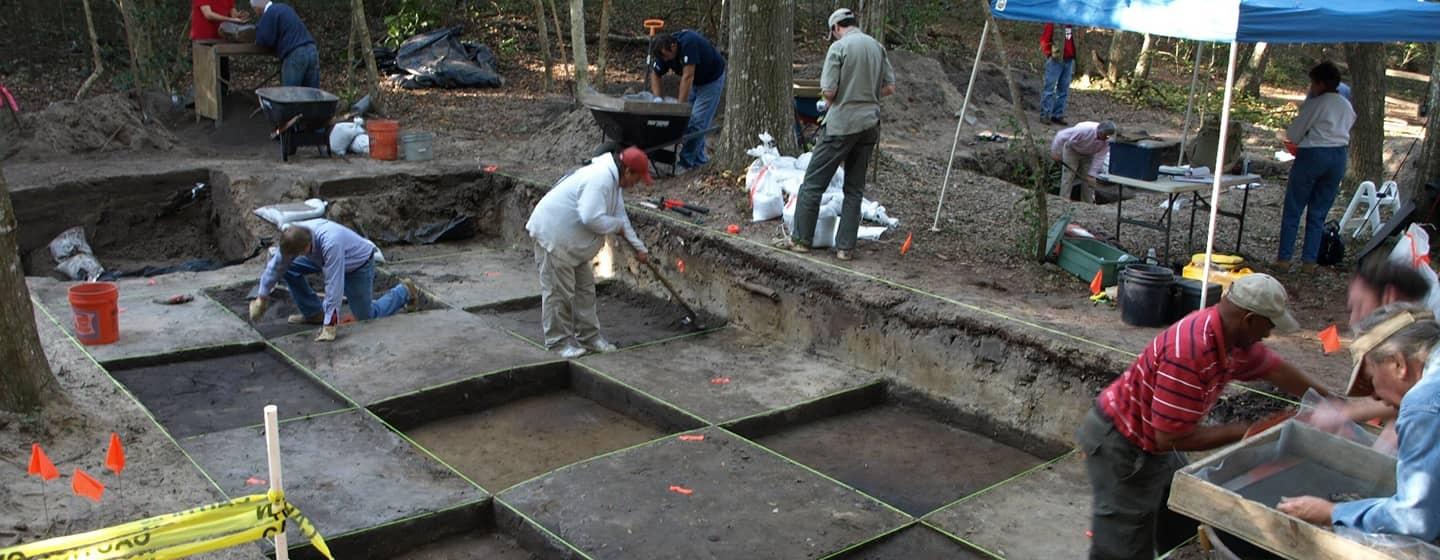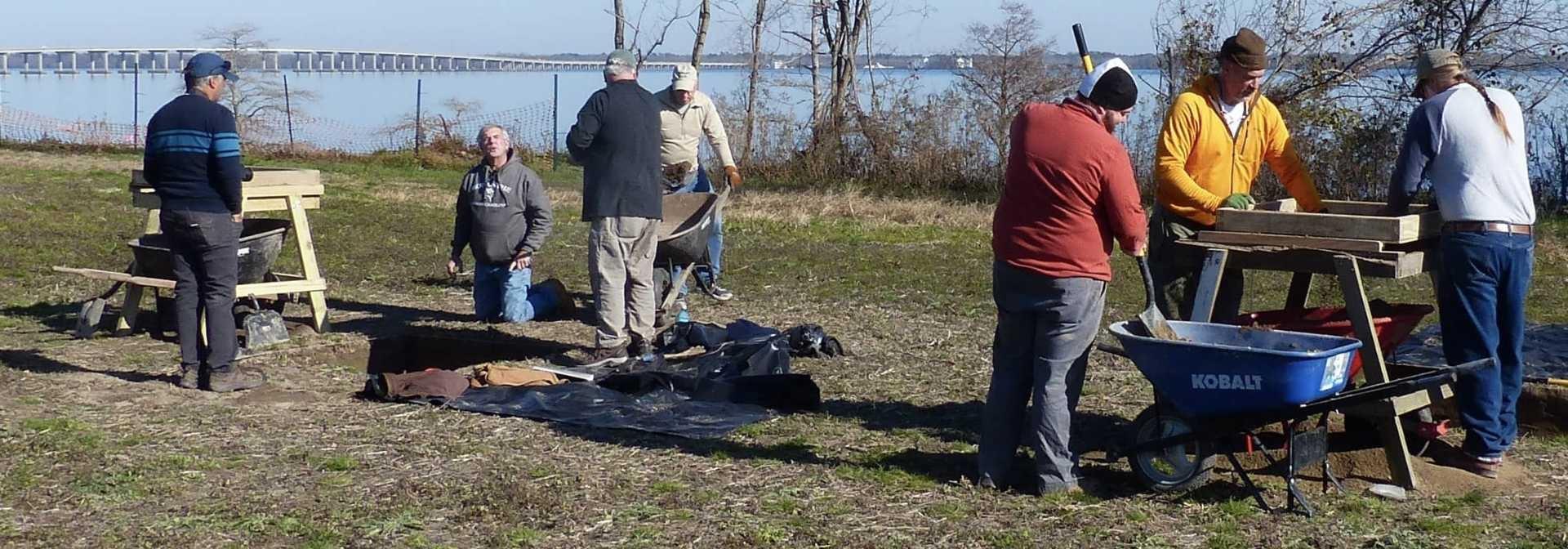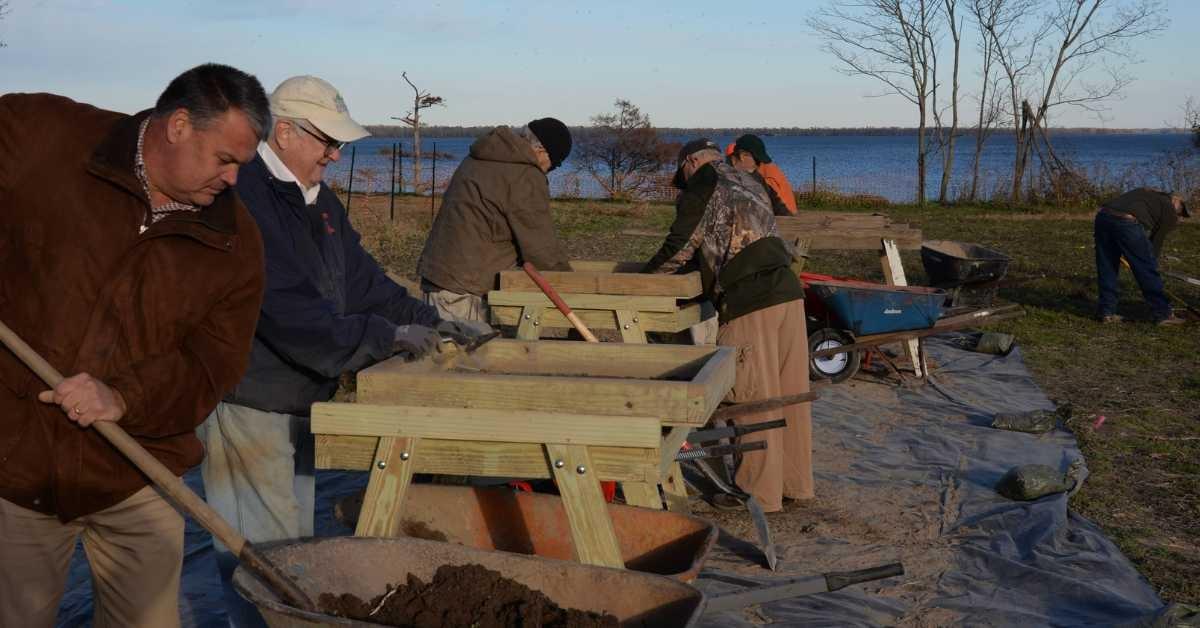Evidence Grows, the Lost Colony Split Up


It’s a line you hear in almost every movie or television show where there’s a chase scene, “Let’s split up, you go that way and I’ll go this way!”
Some version of that action movie line may have been said on the North Carolina coast more than 400 years ago.
The results of two archaeological studies announced this year provide growing evidence that’s what the British settlers who arrived on North Carolina’s shores in 1587 did. The colony’s disappearance became America’s oldest unsolved mystery.
You know the story: 115 English settlers arrived on Roanoke Island to start a new life. They were not the first English explorers, but this group included women and children. Their goal was the creation of a permanent English settlement in the new world.
The expedition’s leader, Governor John White returned to England to get more supplies. His returned was delayed by a war between England and Spain, but when he made it back three years later, he found the colony deserted and the word “CROATOAN” carved into a wooden post.
There has been plenty of speculation about the settlers’ fate in the centuries that have passed: death from disease, massacre by native peoples, or assimilation into a nearby Native American tribe, either as friends or slaves.
The multiple theories collectively gave the colony the name “The Lost Colony.”
The newest discovery was announced by the First Colony Foundation. The Durham-based group says “compelling evidence” has been found that settlers from the colony lived at a site along Salmon Creek, near the Chowan River in Bertie County, for several years.
The Foundation calls the location Site Y. The remnants of everyday life are similar to another location named Site X which was excavated several years ago. Sites X and Y are a couple of miles apart from each other. Both locations are near the Algonkian Indian town Mettaquem.

Foundation researchers used ground-penetrating radar and excavations at both sites, which uncovered ceramic pieces archaeologists identified as Elizabethan artifacts used during the time the colonists were settling on the coast.
Based on the findings, First Colony Foundation principal investigator and Vice President Nicholas Luccketti tells Coastal Review Online it appears a small number of colonists, perhaps an extended family and a few indentured servants, lived along Salmon Creek for a few years.
Researchers also determined what they uncovered was not a result of European trade with Native Americans or natives living with colonists, but that both Site X and Site Y hosted a small group of colonists.
“We all agree that this is not the major relocation site of the Lost Colony,” Luccketti said about Site Y. “We know, because of the amount of material found at this site, it’s not a major relocation site, but again, a satellite site.”
If a small group traveled inland, a book released this summer titled The Lost Colony and Hatteras Island maintains a larger group headed south. The author, Scott Dawson, maintains the colonists were never lost but simply moved to live with their native friends, the Croatoans on Hatteras Island.

Dawson and a team of archaeologists, historians, botanists, geologists and others have conducted digs on small plots in Buxton and Frisco for 11 years. They formed the Croatoan Archaeological Society when the digs began.
Researchers have found thousands of artifacts showing a mix of English and native life roughly four-to-six feet deep in the soil. Parts of swords, rings, writing slates, gun parts and glass are in the same layer of soil as Indian pottery and arrowheads.
Dawson also points to documents from the English colony of Jamestown that show the Roanoke colony did leave their camp to live with their native friends. And more than a century later, English explorer John Lawson found natives with blue eyes who recounted they had ancestors who could “speak out of a book.”
Dawson maintains the evidence shows the colony left Roanoke Island with the friendly Croatoans to settle on Hatteras Island. They thrived, ate well, had mixed families and endured for generations.
Together, the combined archaeological efforts of the two groups are painting an intriguing new picture of The Lost Colony. But the reason the colonists split up may never be known.
“It’s not unlikely that one group might have gone up the Chesapeake, up the Albemarle,” says Mark Horton, a professor and archaeologist from England’s University of Bristol who leads the Croatan Archaeological Society. “But I’m pretty confident one group at least, probably the pretty substantial part, came out to Hatteras Island.”
Watch as archaeologists uncover new clues that could help solve one of histories greatest mysteries: the fate of the Lost Colony on Roanoke Island, the first English settlement in the New World.